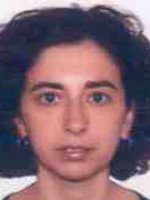abstract
Polymeric ionic liquids (PILs) are interesting membrane materials for CO2 separation. In order to increase the flexibility in tailoring the permeability and selectivity of PIL-based membranes for flue gas separation and natural gas purification, this work explores the use of PILs with mixtures of counter-anions employing a straightforward strategy. A new family of PIL random copolymers having pyrrolidinium cation pendant units combined with different counter-anion mixtures was synthesized and characterized. A simple and quantitative anion exchange procedure was successfully applied to the commercially available poly(diallyldimethylammonium) chloride as confirmed by NMR, FTIR and titration experiments. Composite membranes of the copolymers with 20 wt% of free ionic liquid ([pyr(14)][NTf2]) were prepared and their CO2, CH4 and N-2 permeation properties were measured at 20 degrees C using a time-lag apparatus. In addition, their tensile mechanical properties were also assessed. The results show that the permeability of all gases in the composite membranes is related to their gas diffusivities which are strongly dependent on the second counter-anion. The prepared membranes exhibit permselectivities ranging from 10.8 to 29.3 for CO2/CH4 and from 21.4 to 32.0 for CO2/N-2. Furthermore, their CO2 separation performance as a function of permeability can be tuned by using PILs with different counter-anion mixtures, which opens new possibilities for designing the CO2 separation of these materials.
keywords
POLY(IONIC LIQUID)S; COMPOSITE MEMBRANES; GAS SEPARATIONS; FLUE-GAS; PERFORMANCE; SOLUBILITY; PERMEABILITY; SELECTIVITY; SORPTION; PLATFORM
subject category
Chemistry; Energy & Fuels; Materials Science
authors
Tome, LC; Aboudzadeh, MA; Rebelo, LPN; Freire, CSR; Mecerreyes, D; Marrucho, IM
our authors
acknowledgements
Liliana C. Tome would like to thank the FCT (Fundacao para a Ciencia e Tecnologia) for her PhD research grant (SFRH/BD/72830/2010). Isabel M. Marrucho also acknowledges FCT/MCTES (Portugal) for a contract under Programa Ciencia 2007. This work was partially supported by FCT through the projects Pest-OE/EQB/LA0004/2011 (ITQB) and Pest-C/CTM/LA0011/2011 (CICECO).




